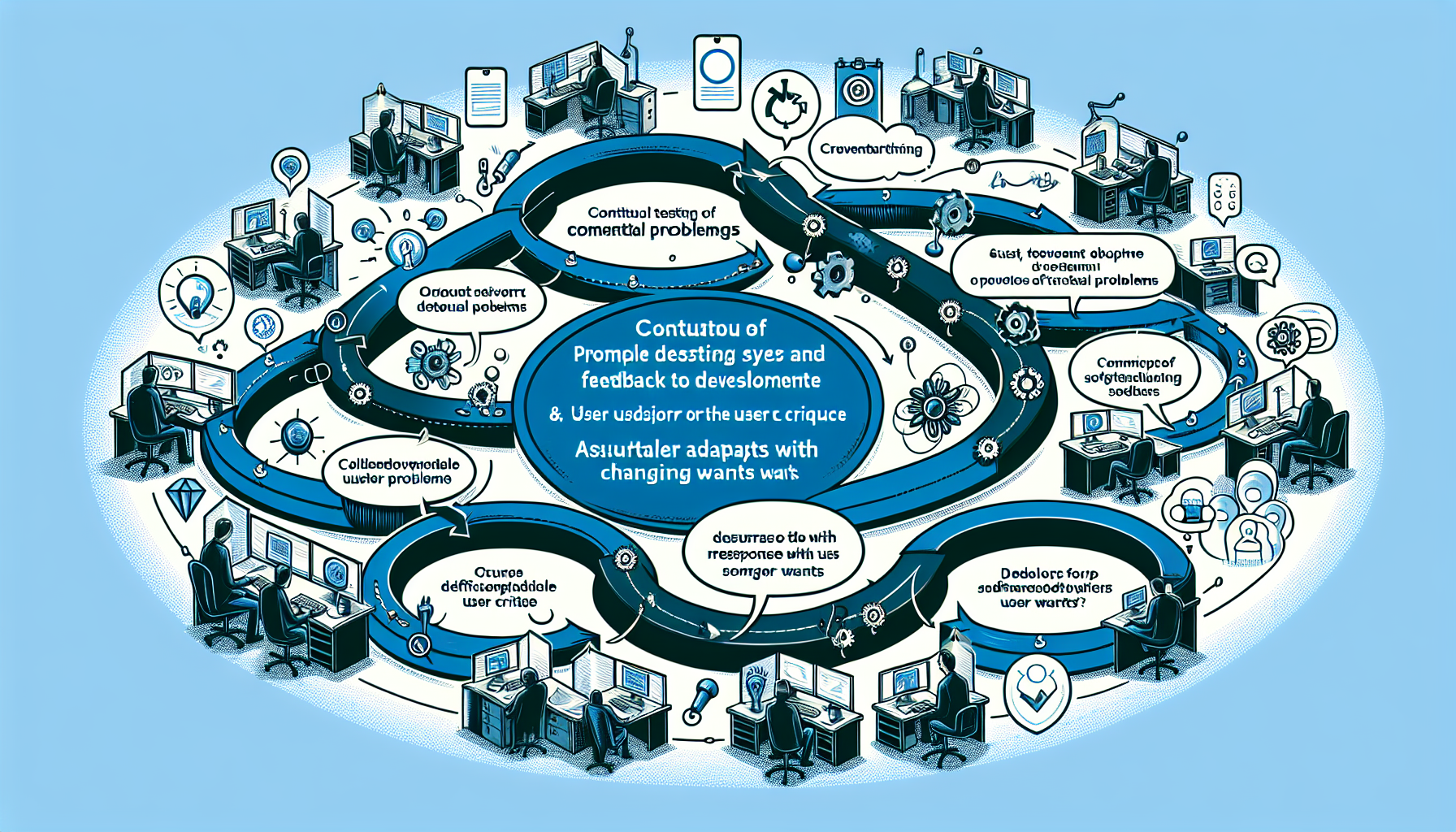“Mastering Software Success: The Art of Testing and User Feedback”
In the dynamic realm of software development, regular software testing is essential. Like a conductor ensuring an orchestra plays in tune, testing keeps every component of your software performing harmoniously, adapting smoothly to evolving user needs.
Building software is akin to crafting a masterpiece. Each line of code is carefully woven into a complex tapestry, designed to perform seamlessly. Regular testing serves as the meticulous tuning process, ensuring each element stands strong and ready for real-world use. It’s like preparing a finely crafted instrument, tuning it for a flawless performance every time.
Central to this process is the concept of feedback loops—a mechanism that transforms software development into a continuous dialogue with users. Feedback loops provide developers with invaluable insights, enabling the creation of software that naturally aligns with user expectations and business needs.
To effectively implement this, testing must be integrated into the development lifecycle from the start. This means choosing frameworks that support comprehensive automated testing, allowing for efficient identification of potential issues. Automated testing should be paired with manual testing—where human testers explore the software as users would—to capture nuances that only a human eye can detect.
Feedback is the user’s voice, amplifying the importance of establishing robust channels for communication. These can include feedback forms, detailed user interviews, or analytics that provide insights into user behavior. This data is crucial, offering direct feedback on how well the software meets user expectations.
However, collecting feedback is only the beginning. The challenge lies in transforming this feedback into actionable changes. Agile development practices excel here, enabling teams to quickly integrate user feedback into each iteration of the software. This agility allows developers to maintain a competitive edge, ready to adapt to the shifting landscape of user needs.
But the impact of regular testing and feedback loops goes even further. By analyzing long-term user interaction patterns, teams can anticipate future demands, enabling proactive development strategies. This foresight not only addresses current challenges but also lays the groundwork for continuous improvement.
Embracing these practices fosters an iterative development journey where testing and feedback are the foundation of evolving software. In this way, software remains a fluid entity, continuously meeting and exceeding user expectations while fostering a culture of quality and responsiveness.
Through regular testing and insightful feedback loops, software development becomes an art form, a balancing act between innovation and functionality. Guided by prior insights, the software resonates with users and thrives within its intended environment.
For anyone navigating the world of software development—whether as an executive, manager, or entrepreneur—consider the integral role of regular testing and feedback. Let these processes guide you in crafting software that predicts and satisfies user demands both today and in the future.
To learn more about how streamlined testing and thoughtful user feedback can drive business success, explore "Software Simplified: Navigating Development for Business Success" on Amazon. This book offers clear insights, empowering business leaders to leverage technology effectively in the digital age.






